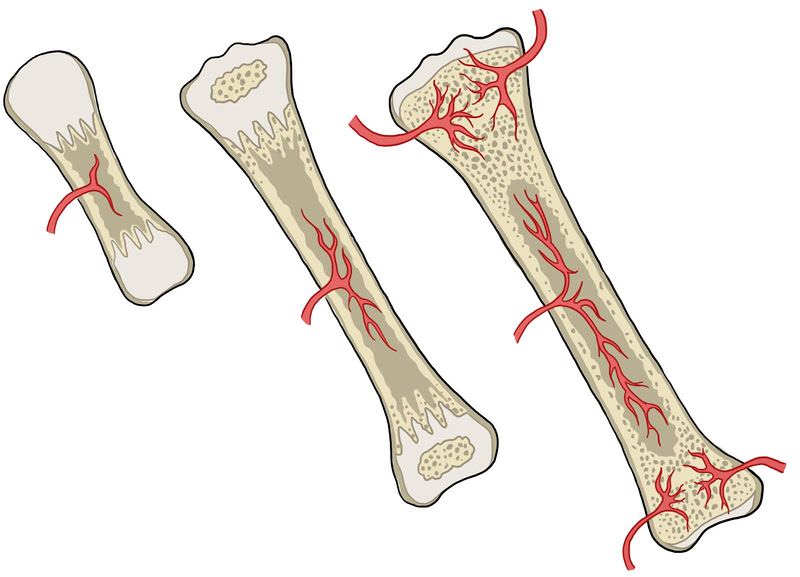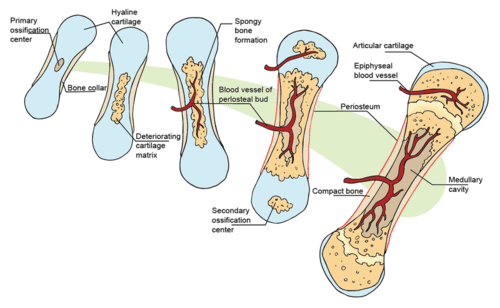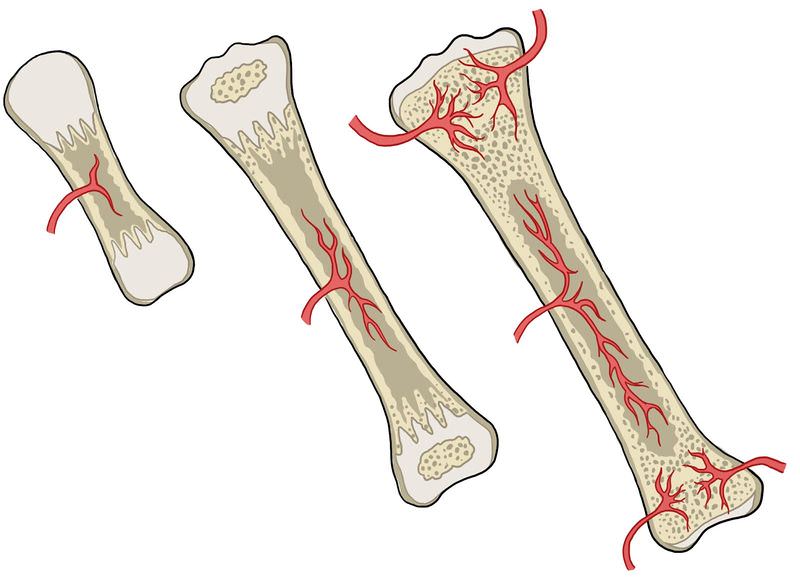13.55: Bone Growth
- Page ID
- 1400

How do bones grow?
Bones are hard structures. So how do they grow? Well, bones are a living tissue. They have a blood supply. You are consistently making new bone. In fact, the human skeleton is replaced every 7-10 years. But how do bones grow? From their ends, where they have cartilage.
Growth and Development of Bones
Early in the development of a human fetus, the skeleton is made entirely of cartilage. The relatively soft cartilage gradually turns into hard bone through ossification. This is a process in which mineral deposits replace cartilage. As shown in Figure below, ossification of long bones, which are found in the arms and legs, begins at the center of the bones and continues toward the ends. By birth, several areas of cartilage remain in the skeleton, including growth plates at the ends of the long bones. This cartilage grows as the long bones grow, so the bones can keep increasing in length during childhood.
 Long bones ossify and get longer as they grow and develop. These bones grow from their ends, known as the epiphysis, and the presence of a growth plate, or epiphyseal line, signifies that the bone is still growing.
Long bones ossify and get longer as they grow and develop. These bones grow from their ends, known as the epiphysis, and the presence of a growth plate, or epiphyseal line, signifies that the bone is still growing.In the late teens or early twenties, a person reaches skeletal maturity. By then, all of the cartilage has been replaced by bone, so no further growth in bone length is possible. However, bones can still increase in thickness. This may occur in response to increased muscle activity, such as weight training.
Summary
- Bones become increasingly ossified and grow larger during fetal development, childhood, and adolescence.
- When skeletal maturity is reached at about age 20, no additional growth in bone length can occur.
Review
- Define ossification.
- A newborn baby has a soft spot on the top of its head. Over the next few months, the soft spot gradually hardens. What explains this?
- Jana is 17 years old and 172 cm tall. She plays basketball and hopes to grow at least 4 cm more before she turns 18 and goes to college. Jana recently injured her leg, and her doctor took an X-ray of it. Based on the X-ray, the doctor determined that Jana had reached skeletal maturity. How much taller is Jana likely to grow? Explain your answer.
| Image | Reference | Attributions |
 |
[Figure 1] | Credit: Christopher Auyeung;Mariana Ruiz Villarreal (Wikimedia: LadyofHats) Source: CK-12 Foundation ; commons.wikimedia.org/wiki/Image:Human_skeleton_front.svg License: CC BY-NC 3.0; Public Domain |
 |
[Figure 2] | Credit: LadyofHats License: CC BY-NC-SA 3.0 |

